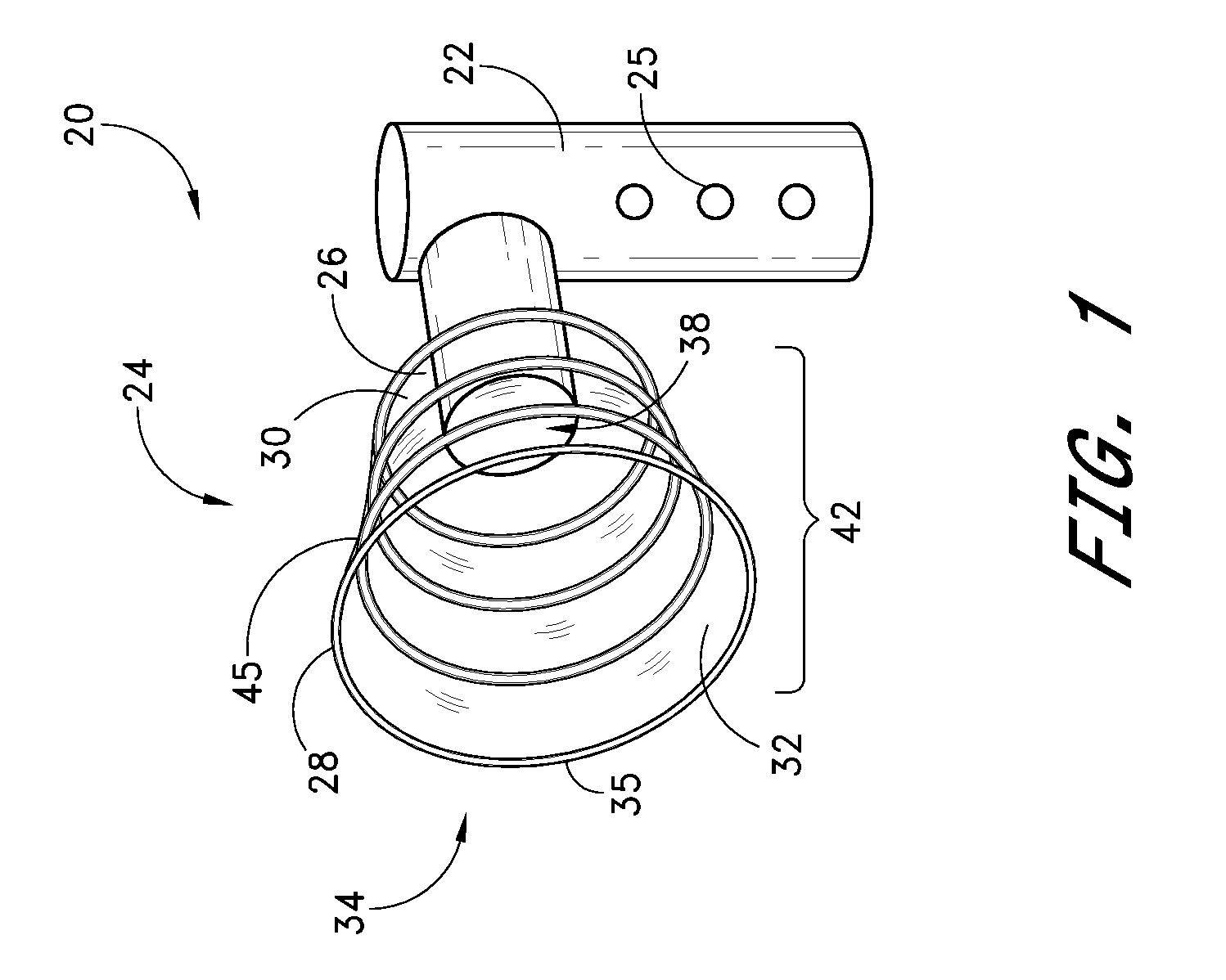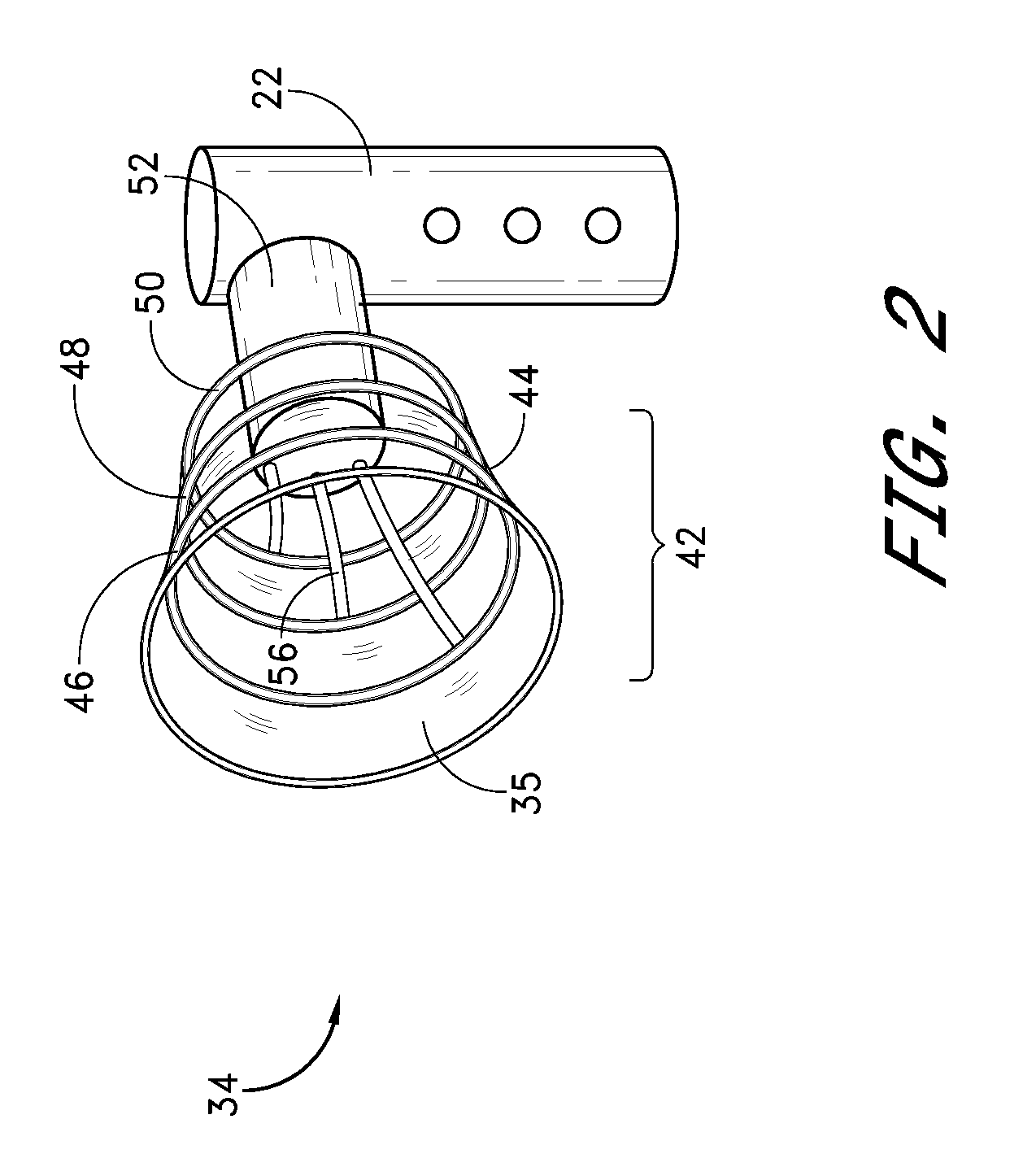Disposable patient interface for intraductal fluid aspiration system
a patient interface and intraductal fluid technology, applied in applications, vaccination/ovulation diagnostics, diagnostic recording/measuring, etc., can solve the problems of difficult to distinguish between malignant and benign breast disease, and many cancer markers could only be detected or measured using conventional biochemical assay methods, so as to ensure the integrity of biological samples
- Summary
- Abstract
- Description
- Claims
- Application Information
AI Technical Summary
Benefits of technology
Problems solved by technology
Method used
Image
Examples
Embodiment Construction
[0050]Referring to FIG. 1, there is illustrated a schematic representation of a portable, self-contained intraductal fluid aspiration device 20 in accordance with one aspect of the present invention. The aspiration device 20 includes a housing 22, for containing various controls and functional components of the device 20. One or more controls and / or indicators 25 may be provided on the housing, for controlling various aspects of the device such as suction, compression, and other features (e.g., heat, ultrasound) which may be included depending upon the intended functionality of the aspiration device 20. The housing 22 may be formed by extrusion, injection molding or other well known techniques from a suitable biocompatible material such as high density polyethylene, nylon, polyethylene terephthalate, or others well known in the art. The housing is preferably formed in an ergonomic configuration, to comfortably facilitate grasping in one hand during use.
[0051]The housing 22 is provid...
PUM
 Login to View More
Login to View More Abstract
Description
Claims
Application Information
 Login to View More
Login to View More - R&D
- Intellectual Property
- Life Sciences
- Materials
- Tech Scout
- Unparalleled Data Quality
- Higher Quality Content
- 60% Fewer Hallucinations
Browse by: Latest US Patents, China's latest patents, Technical Efficacy Thesaurus, Application Domain, Technology Topic, Popular Technical Reports.
© 2025 PatSnap. All rights reserved.Legal|Privacy policy|Modern Slavery Act Transparency Statement|Sitemap|About US| Contact US: help@patsnap.com



